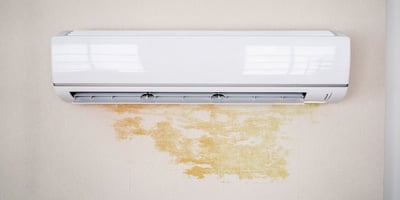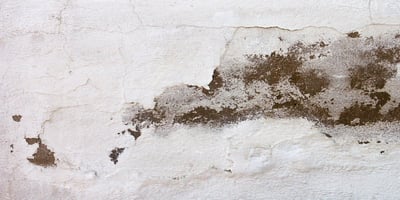Does an air purifier help with mold?

Indoor air quality is a critical aspect of our overall health and well-being, especially considering that we spend a significant amount of time indoors. However, the presence of mold in indoor environments can pose a significant challenge to maintaining clean and healthy air. Mold growth not only affects the structural integrity of buildings but also contributes to various health risks for occupants.
As mold spores become airborne, they and airborne contaminants can be inhaled, leading to allergic reactions, respiratory issues, and even exacerbating existing conditions such as asthma. Consequently, homeowners and office occupants alike are eager to find effective ways to combat mold and improve their indoor air quality.
One common solution that has gained popularity is the use of air purifiers. These devices are designed to filter and clean the air, capturing airborne particles and contaminants that can contribute to poor indoor air quality. But the question remains: Does an air purifier help with mold?
In this article, we will delve into the impact of mold on indoor air quality and explore the effectiveness of air purifiers in addressing mold-related issues. We will examine how air purifiers work, the types of air purifiers available, and the specific mechanisms they employ to capture, remove mold and spores.
To determine whether air purifiers can truly help with mold, we will consider real-world case studies and experiences where individuals have used air purifiers to combat mold problems. Additionally, we will discuss the limitations of other air purifiers and complementary measures that should be taken alongside air purifier usage to effectively control mold growth.
Lastly, we will provide practical tips for optimizing the performance of air purifiers when it comes to mold control. From proper placement and maintenance to selecting the right air purifier for specific mold concerns, we aim to equip readers with valuable insights to make informed decisions in creating a healthier indoor and outdoor air environment.

The Impact of Mold on Indoor Air Quality
Mold is a common and pervasive issue that can significantly impact indoor air quality. It thrives in environments with excess moisture, making homes, offices, and other indoor spaces susceptible to its growth. The presence of mold not only poses risks to the structural integrity of buildings but also has profound effects on the health and well-being of occupants.
- Health Risks: Mold releases tiny spores into the air, which can be easily inhaled by occupants. These mold spores can trigger allergic reactions, leading to symptoms like sneezing, coughing, itchy eyes, and skin irritation. For individuals with asthma or other respiratory conditions, mold exposure can exacerbate their symptoms and make breathing difficulties worse.
- Respiratory Issues: Mold produces volatile organic compounds (VOCs), which can cause respiratory irritation and other health problems when inhaled. Prolonged exposure to mold and its by-products may lead to chronic respiratory issues, particularly in individuals with compromised immune systems or pre-existing respiratory conditions.
- Aggravation of Allergies: Mold is a common allergen, and exposure to mold spores can trigger allergic responses in susceptible individuals. Those with mold allergies may experience persistent symptoms, such as nasal congestion, runny nose, and watery eyes, especially in areas where mold growth is prevalent.
- Asthma Triggers: Mold exposure can act as a potent asthma trigger, leading to asthma attacks in individuals with the condition. Mold spores can irritate the airways and cause bronchoconstriction, making it difficult for asthma sufferers to breathe.
- Foul Odors: Mold growth often emits a musty, unpleasant odor that permeates the indoor space. This odor can be challenging to eliminate without addressing the underlying mold issue.
- Structural Damage: In addition to its impact on indoor air quality and health, mold can also cause structural damage to buildings. It can grow on surfaces such as walls, ceilings, and floors, compromising their integrity and requiring costly repairs.
- Aesthetic and Property Value Concerns: The presence of visible mold can detract from the aesthetics of a space and reduce the overall property value. Mold growth can be particularly problematic in real estate transactions, leading to the potential devaluation of the property.
To address the impact of mold on indoor air quality, it is crucial to take proactive measures to prevent and control mold growth. Proper ventilation, using air filters, maintaining indoor humidity levels, and promptly addressing water leaks and moisture issues can help reduce the likelihood of mold development.
Can Air Purifiers Help with Mold?
Air purifiers can be effective in helping to address mold issues and improve indoor air quality, but their effectiveness depends on various factors. Here's a closer look at how air purifiers can help with the mold problem:
- Mold Spore Removal: Air purifiers equipped with High-Efficiency Particulate Air (HEPA) filters can capture and trap mold spores from the air. HEPA filters are designed to capture particles as small as 0.3 microns, which includes most mold spores. By removing these airborne mold spores, air purifiers can help reduce the concentration of mold in the indoor environment.
- Mold Odor Reduction: Some air purifiers are equipped with activated carbon filters, which are effective in absorbing and neutralizing odors, including the musty smell associated with mold growth. These filters can help reduce the unpleasant odor caused by mold infestations.
- Preventing Mold Spore Circulation: Air purifiers with powerful fans can help improve air circulation and prevent mold spores from settling on surfaces. By constantly moving the air, air purifiers can help minimize the accumulation of mold spores on walls, ceilings, and furniture.
- Combining with Other Mold Remediation Measures: Air purifiers can complement other mold remediation measures, such as fixing water leaks, addressing moisture issues, and cleaning visible mold growth. While air purifiers can help with airborne mold spores, they are not a substitute for addressing the root cause of mold growth.
- Part of a Comprehensive Mold Control Plan: Air purifiers should be part of a broader strategy for mold control. They are most effective when used in conjunction with other preventive measures to reduce indoor humidity and eliminate the conditions that encourage mold growth.
It's important to note that air purifiers are not a one-size-fits-all solution for mold issues. The effectiveness of an air purifier in mold removal depends on factors such as the type of mold present, the size of the space, the efficiency and the best air purifier, and the severity of the mold infestation.

Tips for Using Air Purifiers Effectively for Mold Control
Using air purifiers effectively for mold control requires careful consideration of several key factors. Here are some practical tips to optimize the performance of most air purifiers used in combating mold:
- Select the Right Air Purifier: Choose an air purifier with a High-Efficiency Particulate Air (HEPA) filter. HEPA filters are highly effective in capturing mold spores and other airborne particles, ensuring cleaner air.
- Consider Activated Carbon Filters: Look for air purifiers with activated carbon filters. These filters can help absorb and neutralize mold odors, which are often associated with musty and unpleasant smells.
- Determine the Appropriate Size: Ensure the air purifier is appropriately sized for the room or space it will be used in. Check the manufacturer's guidelines to determine the suitable coverage area for the air purifier model.
- Positioning Matters: Place the air purifier in a central location within the room to maximize air circulation and coverage. Avoid obstructing the air intake and exhaust vents of the air purifier.
- Run the Air Purifier Continuously: To maintain optimal air quality and effectively control mold spores, run the air purifier continuously. Mold spores can become airborne at any time, so continuous operation ensures continuous filtration.
- Address the Source of Moisture: While air purifiers can help with airborne mold spores, they do not address the underlying cause of mold growth, which is often excess moisture. Fix any water leaks, address humidity issues, and ensure proper ventilation to prevent mold growth.
- Regularly Replace Filters: Follow the manufacturer's recommendations for filter replacement. HEPA filters need to be replaced periodically to maintain their effectiveness in capturing mold spores and other particles.
- Monitor Indoor Humidity: Use a hygrometer to monitor indoor humidity levels regularly. Maintain indoor humidity below 50% to discourage mold growth.
- Combine Air Purifiers with Other Remediation Measures: Air purifiers are most effective when used in conjunction with other mold control measures. Consider mold remediation strategies such as cleaning visible mold growth and improving ventilation.
- Regular Maintenance: Perform regular maintenance on the air purifier, including cleaning the unit and ensuring all components are in good working condition.
- Consider Multiple Units for Larger Spaces: For larger rooms or open floor plans, consider using multiple air purifiers strategically placed to ensure comprehensive coverage.
- Follow Manufacturer's Instructions: Always follow the manufacturer's instructions for the specific air purifier model you are using. This includes guidance on filter replacement, maintenance, and proper usage.
By following these tips, you can maximize the effectiveness of air purifiers in controlling and removing mold spores, and improving indoor air quality. Remember that air purifiers are a valuable tool in mold control, but they should be used as part of a comprehensive approach that includes addressing the root cause of mold growth and maintaining a clean and healthy indoor environment.

Summing up
Air purifiers can be a valuable tool in addressing mold issues and improving indoor air quality. These devices, particularly those equipped with HEPA filters and activated carbon filters, effectively capture mold spores and neutralize mold odors, contributing to a healthier living or working environment.
However, it is essential to recognize that air purifiers are not a standalone solution for mold control. While they can help reduce airborne mold spores, they do not address the root cause of mold growth, which is often excess moisture. Not all air purifiers effectively combat mold, it is crucial to implement a comprehensive approach that includes identifying and fixing water leaks, controlling indoor humidity levels, and cleaning visible mold growth.
Air purifiers should be seen as part of a broader strategy for mold prevention and control. When used in conjunction with other remediation measures, such as improving ventilation and maintaining a clean indoor environment, air purifiers can significantly contribute to mold reduction and improved indoor air quality.

Additionally, selecting the right air purifier for the specific mold concerns and ensuring proper maintenance, such as regular filter replacement, is vital to best air purifiers and optimizing their performance.
As individuals and families become increasingly aware of the importance of indoor air quality, air purifiers continue to gain popularity as a means to create a healthier living space. By understanding their capabilities and limitations in mold control, users of many air purifiers can make informed decisions and create a cleaner, safer, and more comfortable environment for all occupants.





































.jpg?height=200&name=photo_2023-12-14_18-54-35%20(1).jpg)
.png?height=200&name=image_2024-07-11_20-09-51%20(1).png)
